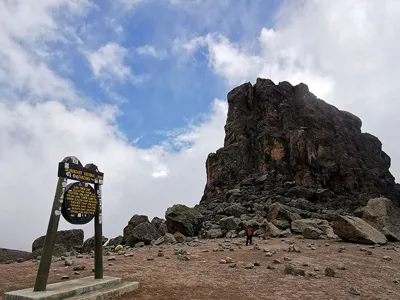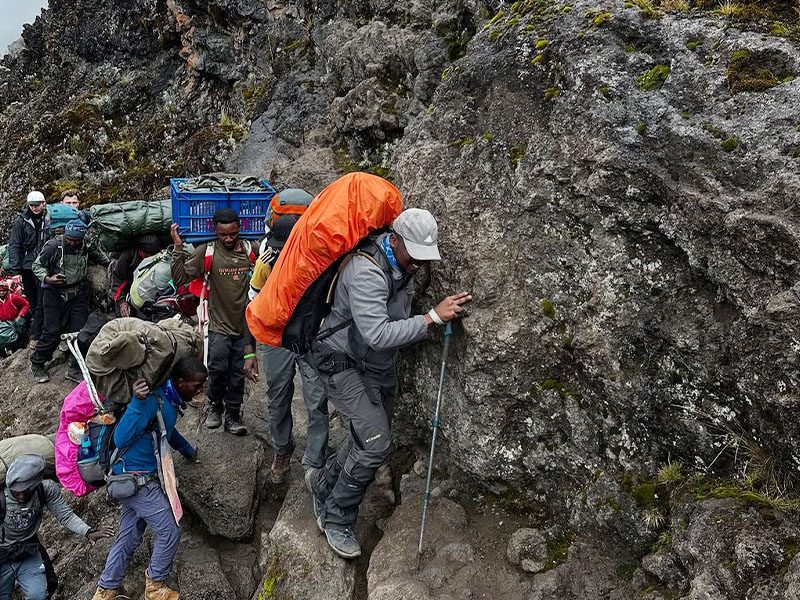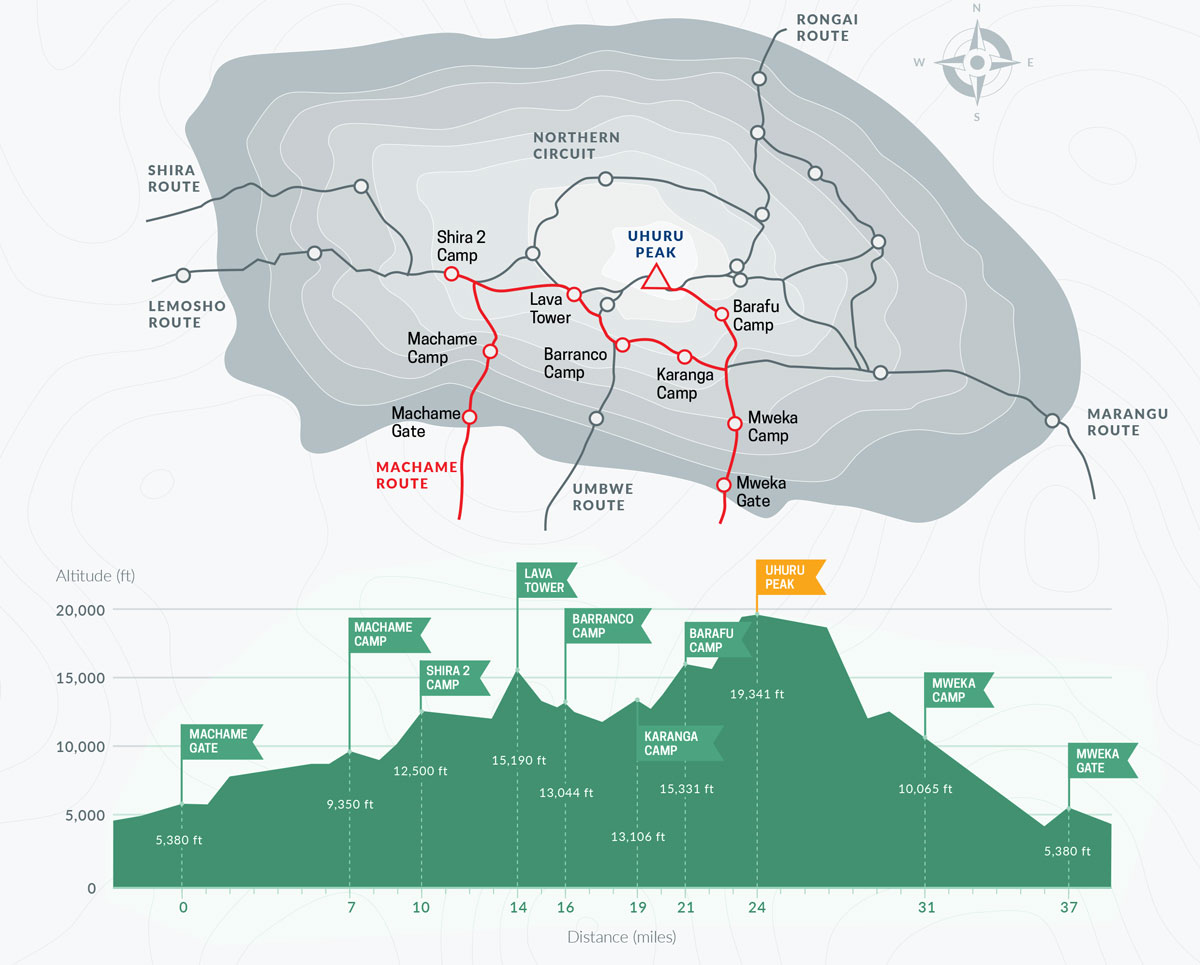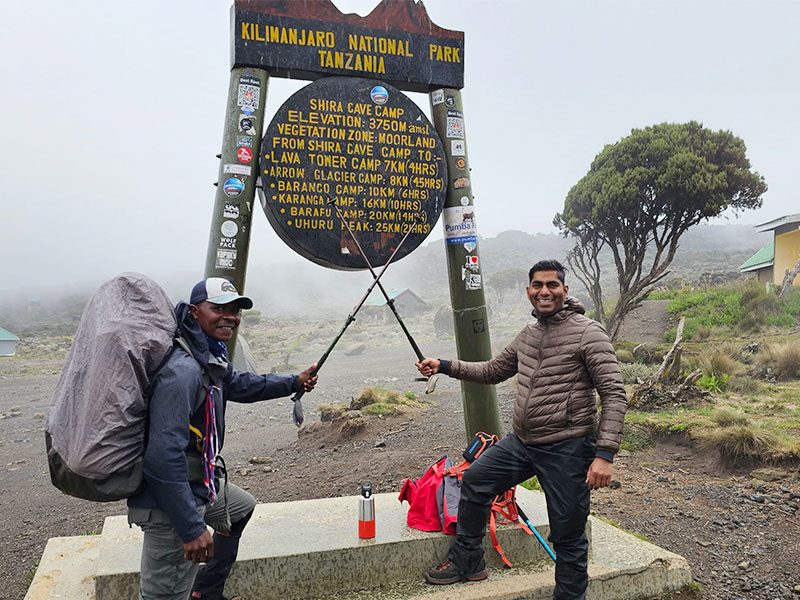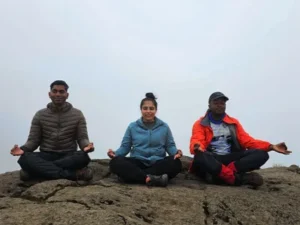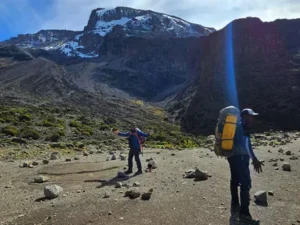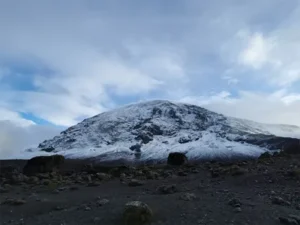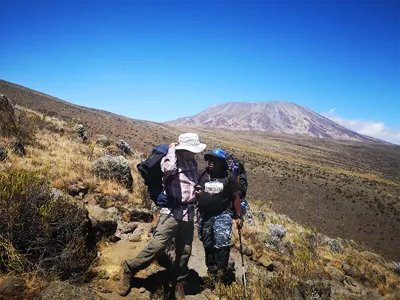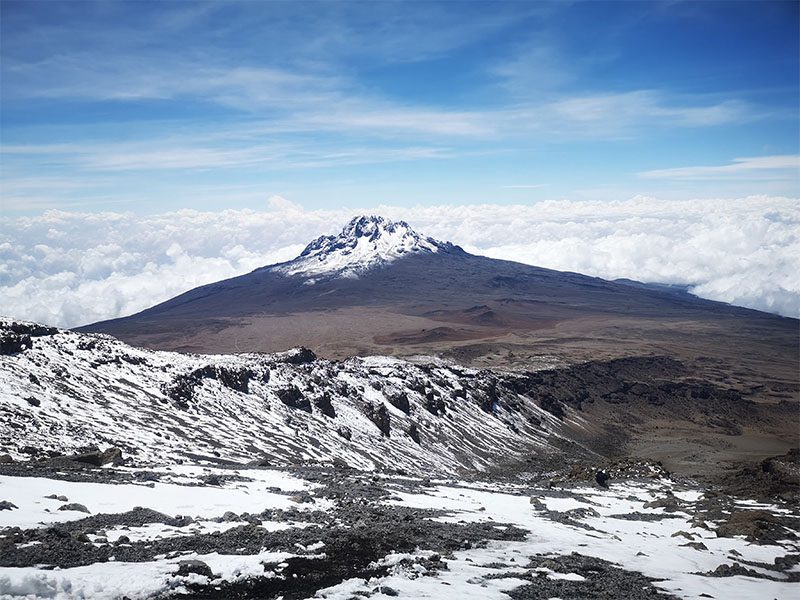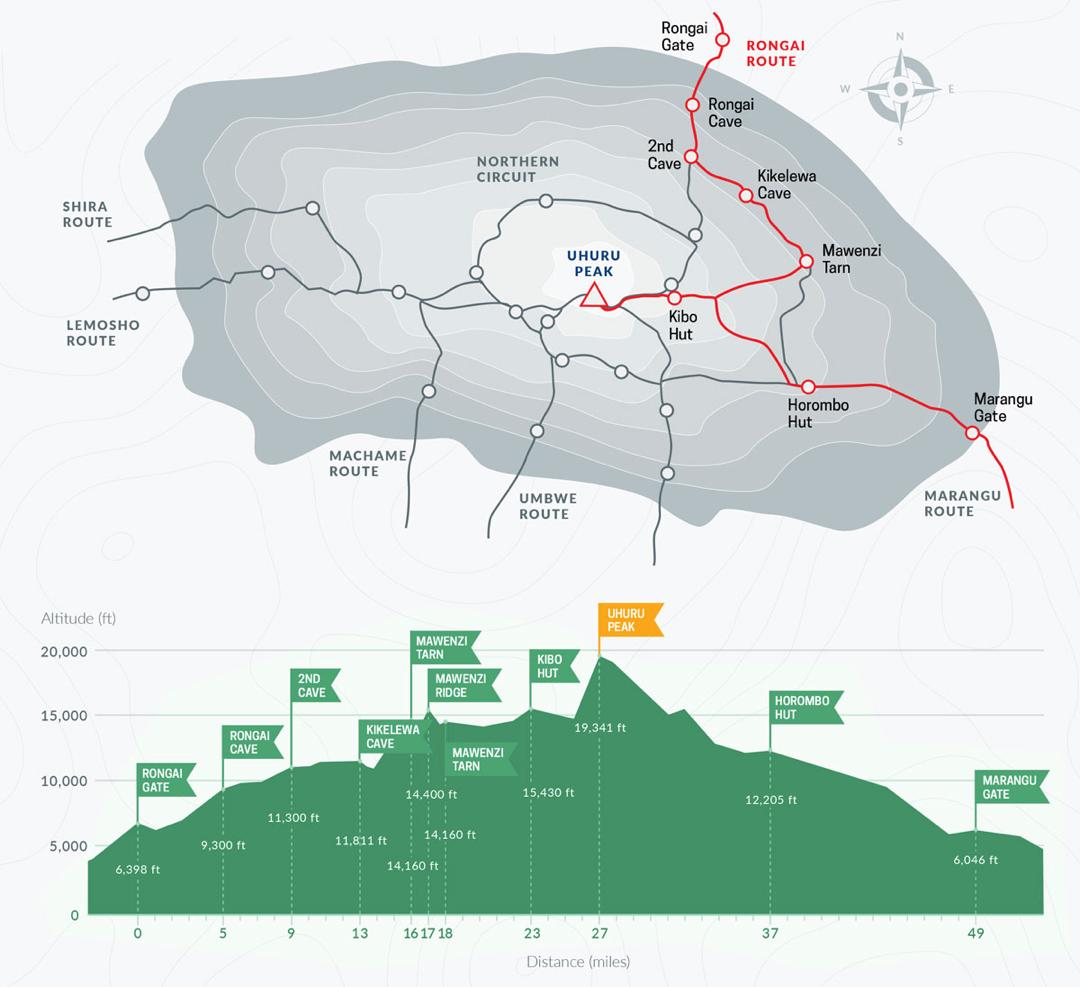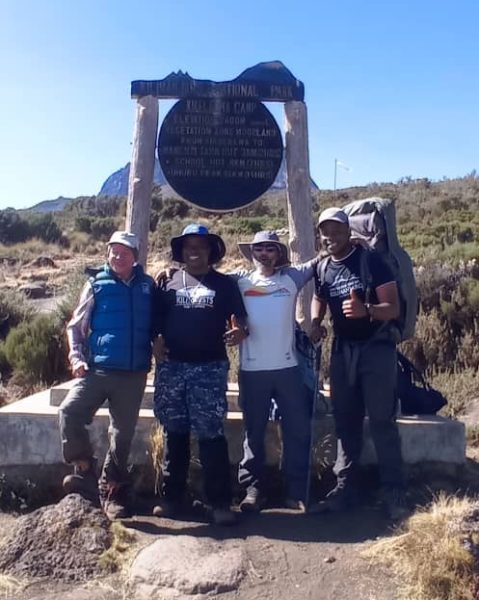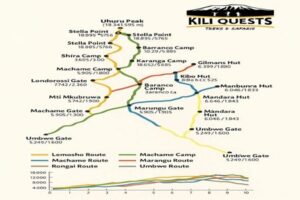Table of Contents
Lemosho Route on Kilimanjaro: Scenic Views & High Success Rate
Why Choose the Lemosho Route?

Lemosho Route Overview
Lemosho Day Map and Elevation Profile
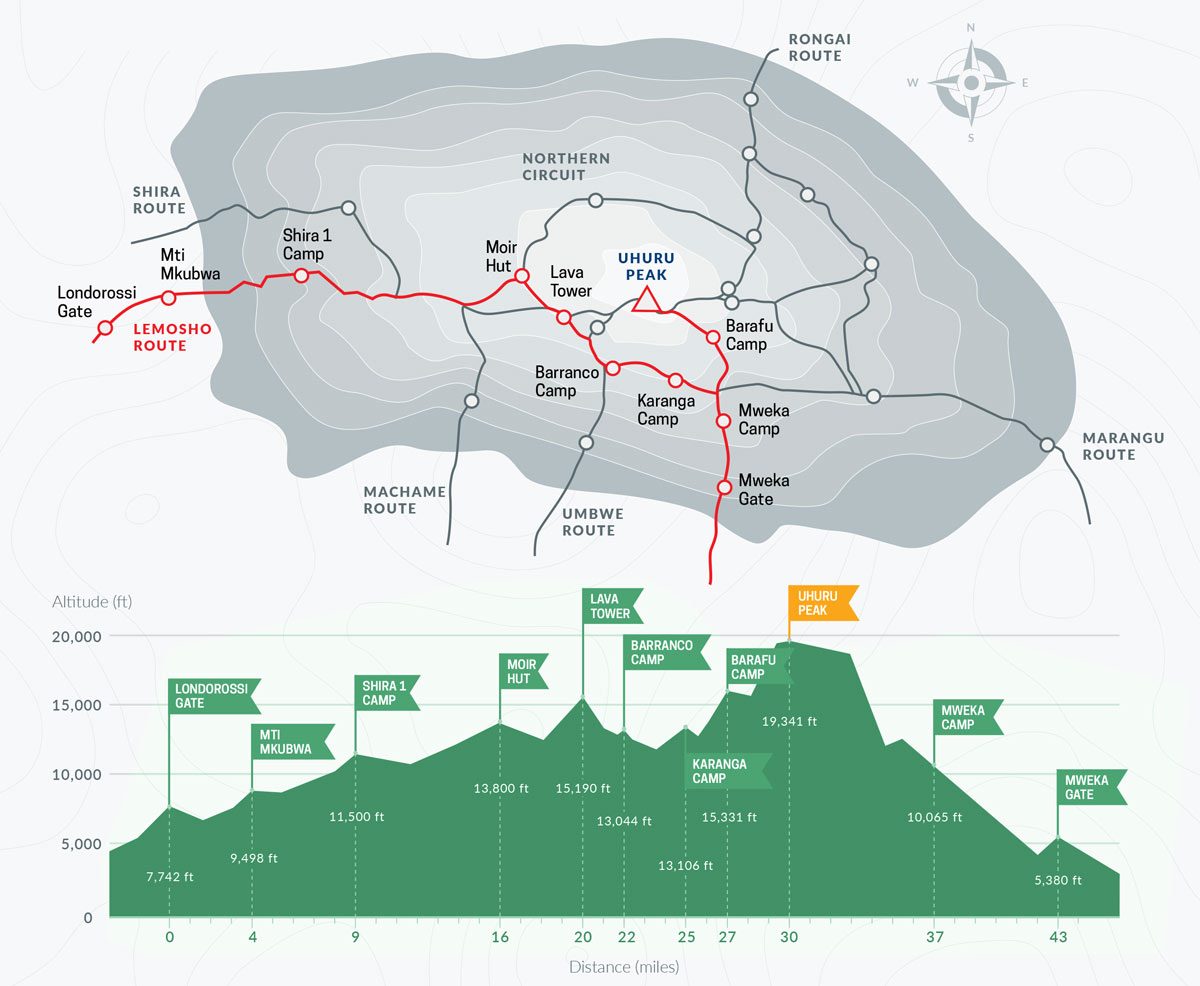
Day-by-Day Itinerary (8-Day Version)
- Altitude: 2,100 m to 2,650 m
- Hike Time: 3–4 hours
- Forest zone with rich biodiversity
- Altitude: 2,650 m to 3,610 m
- Hike Time: 5–6 hours
- Enter the Shira Plateau with stunning open views
- Altitude: 3,610 m to 3,850 m
- Hike Time: 4–5 hours
- Gentle trek with good acclimatization
- Altitude: 3,850 m to 4,640 m (up) → 3,960 m (down)
- Hike Time: 6–7 hours
- Acclimatization day with high-altitude exposure
- Altitude: 3,960 m to 4,035 m
- Hike Time: 4–5 hours
- Climb the iconic Barranco Wall 257 meters (843 feet) tall
- Altitude: 4,035 m to 4,673 m
- Hike Time: 3–4 hours
- Prepare for summit push
- Altitude: 4,673 m to 5,895 m (summit), descend to 3,100 m
- Hike Time: 12–14 hours total
- Sunrise summit, then long descent
- Altitude: 3,100 m to 1,640 m
- Hike Time: 3–4 hours
- Receive your summit certificate!
Lemosho Route Difficulty and Acclimatization
- First-time high-altitude trekkers
- Those with average fitness
- Climbers who want to enjoy the journey, not rush to the top
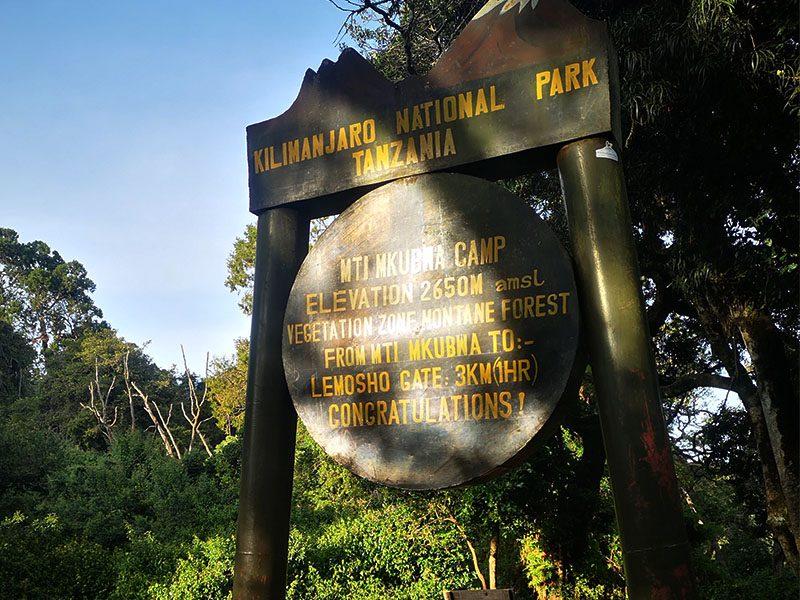
Best Time to Climb the Lemosho Route
- January to early March: Warm, with occasional clouds
- June to October: Clear skies, cool and dry
What Makes Lemosho Unique?
- Starts on remote western side of the mountain
- Crosses the dramatic Shira Plateau
- Includes the acclimatization climb to Lava Tower
- Barranco Wall is a thrilling highlight
- Traverses all ecological zones, from rainforest to arctic summit
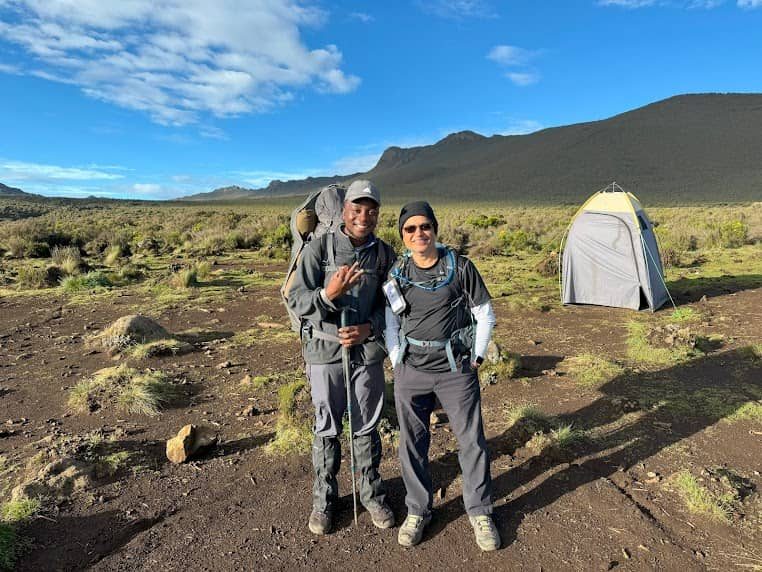
Is the Lemosho Route Right for You?
- Want the best scenery on Kilimanjaro
- Are serious about summit success
- Prefer a quieter, more peaceful approach early in the trek
- Want time to enjoy nature without feeling rushed
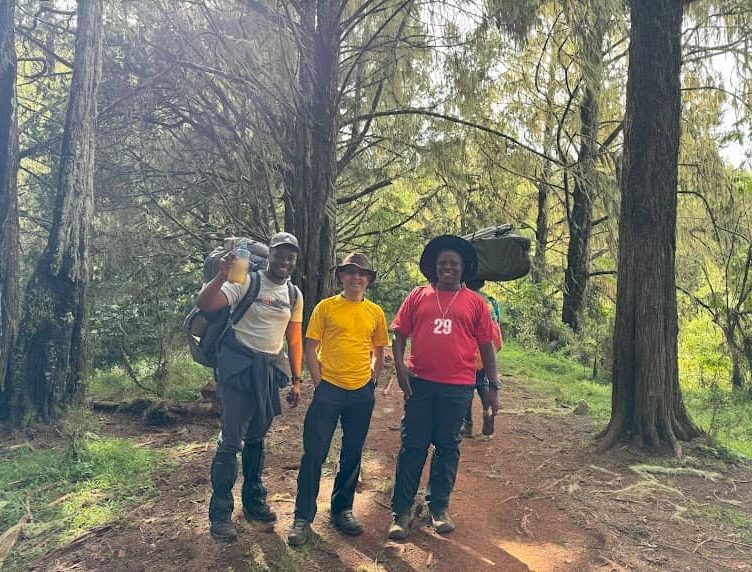
Climb Kilimanjaro with Kili Quests via the Lemosho Route
At Kili Quests, we specialize in well-paced, professionally guided Lemosho climbs that prioritize your safety, comfort, and summit success. With a 98% success rate on our 8-day treks, you’re in experienced hands from start to finish.Temperatures can drop well below freezing during the final ascent — don’t miss our checklist of what to wear and carry on summit day.
Related Articles
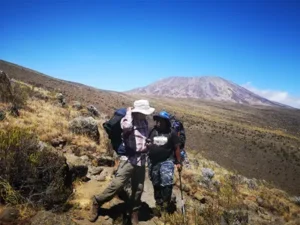
Rongai Route: Quiet Kilimanjaro Trail from North
Table of Contents Rongai Route on Kilimanjaro: Quiet Kilimanjaro Trail from North Why Choose the Rongai Route? The Rongai Route is the only trail that
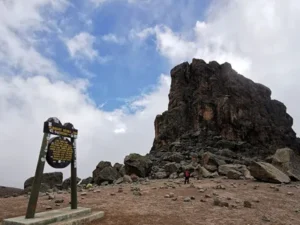
Lemosho Route: Scenic Kilimanjaro Trail
Table of Contents Lemosho Route on Kilimanjaro: Scenic Views & High Success Rate Why Choose the Lemosho Route? The Lemosho Route is widely regarded as
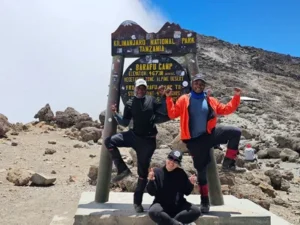
Climb Kilimanjaro via Shira Route: Scenic & Remote
Table of Contents Shira Route on Kilimanjaro: Remote Trail with Open Views Why Choose the Shira Route? Due to this high starting point, it’s best


